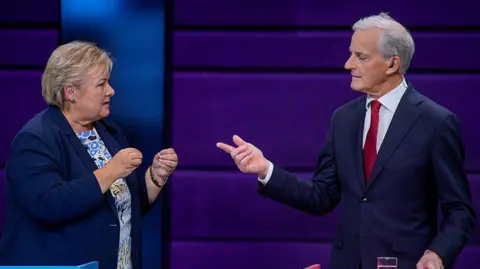---
With the first polls closing in Canada, voters are choosing their representatives amid significant political shifts and external pressures from the United States. Expected late Monday, results are anticipated to reflect a stark change from the pre-election landscape dominated by the Conservative Party.
Traditionally, the election landscape was favorable to the Conservatives, led by Pierre Poilievre, who held a notable lead just months prior. However, recent developments, including the resignation of Justin Trudeau and President Trump’s trade threats, have positioned the Liberal Party, now headed by Mark Carney, in a surge towards electoral success.
A detailed breakdown of current polling shows that the Liberals are securing early leads in key regions, a notable turn given their previous struggles. The New Democratic Party, Greens, and Bloc Québécois are contending for minor representation but are unlikely to alter the primary two-party dynamic significantly.
Current statistics from Elections Canada indicate the Liberals have claimed 50.3% of early votes compared to the Conservatives' 43.1% as results from 343 parliamentary seats begin to roll in. Not only do these results indicate popular dissatisfaction with the previous Liberal government under Trudeau, they reflect a strategic pivot towards leadership perceived as effective in negotiating with the volatile Trump administration.
The operational mechanics of Canada’s electoral process also contribute to the unpredictability of outcomes. Votes are manually tallied at polling stations, dispelling the influence of technological errors seen in other jurisdictions. This traditional method favors a more gradual results rollout, creating suspense as counting continues.
While global matters, particularly climate change, were expected to dominate the election, they have taken a backseat as Canadian voters prioritize immediate economic concerns and national sovereignty amid manipulation from foreign entities. Mark Carney, leveraging his background from the world of finance and central banking, frames his campaign amidst an economically anxious electorate, positioning himself as a shield against Trump’s policies.
Conversely, Poilievre's platform, emphasizing reduced government intervention and deregulation, has drawn scrutiny due to perceived ideological similarities with Donald Trump — an association that has proven detrimental during this election cycle.
Racism and social issues are also interwoven in this election's narrative, with candidates distancing themselves from past controversies and controversies surrounding their stances on immigration. Political maneuverings continue as candidates navigate a complex socio-political environment shaped by public sentiment and the looming U.S. influence.
With votes now cast and initial tallies expected soon, Canada stands at a crucial juncture. The outcomes from this election will not only determine the direction of its government but also set the course for future Canadian sovereignty amid external pressures from the United States and the evolving needs of its populace.
With the first polls closing in Canada, voters are choosing their representatives amid significant political shifts and external pressures from the United States. Expected late Monday, results are anticipated to reflect a stark change from the pre-election landscape dominated by the Conservative Party.
Traditionally, the election landscape was favorable to the Conservatives, led by Pierre Poilievre, who held a notable lead just months prior. However, recent developments, including the resignation of Justin Trudeau and President Trump’s trade threats, have positioned the Liberal Party, now headed by Mark Carney, in a surge towards electoral success.
A detailed breakdown of current polling shows that the Liberals are securing early leads in key regions, a notable turn given their previous struggles. The New Democratic Party, Greens, and Bloc Québécois are contending for minor representation but are unlikely to alter the primary two-party dynamic significantly.
Current statistics from Elections Canada indicate the Liberals have claimed 50.3% of early votes compared to the Conservatives' 43.1% as results from 343 parliamentary seats begin to roll in. Not only do these results indicate popular dissatisfaction with the previous Liberal government under Trudeau, they reflect a strategic pivot towards leadership perceived as effective in negotiating with the volatile Trump administration.
The operational mechanics of Canada’s electoral process also contribute to the unpredictability of outcomes. Votes are manually tallied at polling stations, dispelling the influence of technological errors seen in other jurisdictions. This traditional method favors a more gradual results rollout, creating suspense as counting continues.
While global matters, particularly climate change, were expected to dominate the election, they have taken a backseat as Canadian voters prioritize immediate economic concerns and national sovereignty amid manipulation from foreign entities. Mark Carney, leveraging his background from the world of finance and central banking, frames his campaign amidst an economically anxious electorate, positioning himself as a shield against Trump’s policies.
Conversely, Poilievre's platform, emphasizing reduced government intervention and deregulation, has drawn scrutiny due to perceived ideological similarities with Donald Trump — an association that has proven detrimental during this election cycle.
Racism and social issues are also interwoven in this election's narrative, with candidates distancing themselves from past controversies and controversies surrounding their stances on immigration. Political maneuverings continue as candidates navigate a complex socio-political environment shaped by public sentiment and the looming U.S. influence.
With votes now cast and initial tallies expected soon, Canada stands at a crucial juncture. The outcomes from this election will not only determine the direction of its government but also set the course for future Canadian sovereignty amid external pressures from the United States and the evolving needs of its populace.




















